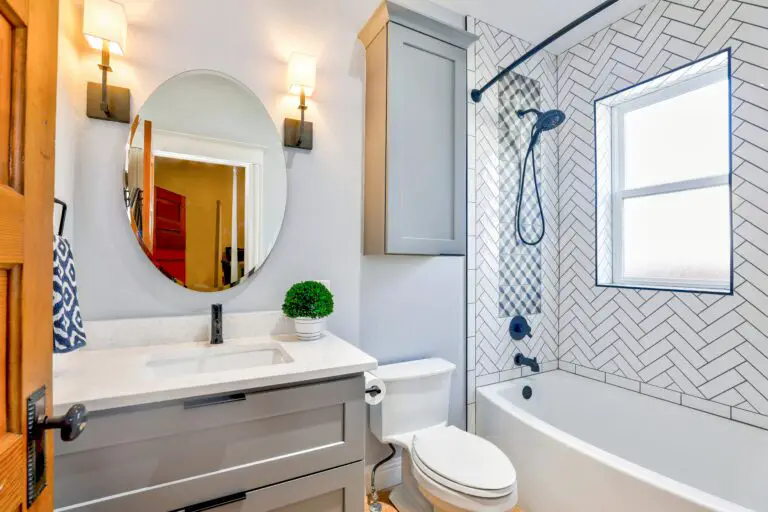A well-organized linen closet not only enhances the aesthetic appeal of your home but also simplifies your daily life. An orderly linen closet can save you time when searching for linens, ensure they remain in good condition, and prevent the accumulation of unnecessary clutter. One of the key elements of achieving a tidy linen closet is mastering the art of folding.
From fitted sheets to delicate pillowcases, we’ll cover various folding techniques, space-saving solutions, and helpful tips for maintaining a neat and functional linen closet.
I. Assessing Your Linen Closet

Start by taking inventory of all the linens you have. Check for mismatched items, worn-out pieces, and linens that are rarely used. Discard or donate any items that are beyond repair or no longer needed. This initial step will set the stage for a more organized linen closet.
Next, evaluate the current state of your linen closet’s organization. Are the linens neatly stacked, or do they look haphazardly arranged? Are the shelves utilized efficiently, or is there unused space? Understanding the current state will help you identify any challenges and create a plan to address them effectively.
II. Essential Tools and Materials on the Art of Folding

Before we dive into the folding techniques, it’s essential to gather the necessary tools and materials for a well-organized linen closet. Consider investing in storage containers or baskets to keep linens separated and easily accessible. Opt for clear containers or label them to quickly identify what’s inside.
Hangers are another important element of linen closet organization, especially for delicate items like dresses and blouses. Choose different types of hangers, such as padded hangers for delicate fabrics and non-slip hangers for slippery materials.
Additionally, invest in labeling tools like adhesive labels or chalkboard labels. Proper labeling will prevent confusion and ensure a smooth rotation of linens.
III. Mastering Folding Techniques

A. Folding Basics: Proper Posture and Hand Placement
Mastering the art of folding begins with understanding the basics. Stand at a comfortable height, with your back straight, and keep your hands clean and dry. This posture will help you maintain efficiency and reduce strain on your body.
B. Folding Different Fabrics
Bed Sheets
Folding bed sheets can be a challenge due to their large size. Lay the sheet flat on a clean surface, fold in the corners to create a rectangle, and then proceed with neat, tight folds until you have a compact bundle.
Pillowcases
Pillowcases are relatively easier to fold. Flatten the pillowcase, fold it in half, and then in thirds to create a tidy package.
Towels (Bath Towels, Hand Towels, Washcloths)
Bath towels can take up significant space in the linen closet. Fold them in thirds lengthwise, then fold them in half, and finally in thirds again. Hand towels and washcloths can be folded similarly.
Tablecloths and Napkins
For tablecloths, start by folding them in half lengthwise, then in half again, and continue until you have the desired size. Napkins can be folded in various ways, depending on your preference, such as the classic rectangle fold or the fancy fan fold.
C. Folding Methods for Space Optimization
KonMari Folding Method
Inspired by Marie Kondo’s tidying techniques, the KonMari method involves folding items into small, compact rectangles, allowing them to stand upright. This method maximizes space and makes it easier to find specific items.
Rolled vs. Flat Folding
Rolled folding is ideal for small linens like washcloths, while flat folding is suitable for larger items like bed sheets and towels.
Stacking vs. Standing Arrangements
Experiment with different arrangements to see what works best for your linen closet. Stacking linens allows easy access to different items while standing arrangements can make it easier to see everything at a glance.
IV. Arranging Items in the Linen Closet

A. Categorizing Items for Efficient Organization
Group similar linens together, such as bed sheets, pillowcases, towels, and tablecloths. This organization will make it easier to find specific items when you need them.
B. Utilizing Shelves, Racks, and Drawers Effectively
Place the frequently used linens at eye level for easy access. Utilize lower shelves or drawers for heavier items, like comforters, and upper shelves for items that are used less frequently.
C. Creating a System for Rotating Linens
To prevent wear and tear, rotate your linens regularly. Place freshly laundered linens at the bottom or back of the stack so the older ones get used first.
V. Maximizing Closet Space

A. Utilizing Vertical Space with Shelves and Hooks
Install additional shelves or hooks on the inside of the closet door to maximize vertical storage. Utilizing the often-underutilized door space can significantly increase storage capacity.
B. Underutilized Storage Areas
Make use of the back of the door, inside closet doors, or even the top shelf to store linens that are not used frequently.
C. Space-Saving Solutions for Small Linen Closets
If you have a small linen closet, consider investing in space-saving storage solutions like vacuum-sealed bags for bulky items or collapsible storage bins.
VI. Preventing Clutter and Maintaining Order

A. Regularly Decluttering and Purging Unnecessary Items
Make decluttering a regular habit. Periodically assess your linens to remove damaged, worn-out, or no longer-used items.
B. Establishing a Routine for Tidying Up the Linen Closet
Dedicate a few minutes each week to tidy up the linen closet. This routine will prevent the accumulation of clutter and maintain order.
C. Involving Family Members in Maintaining the Organization
Encourage everyone in the household to follow the organization system and contribute to keeping the linen closet tidy.
VII. Linen Closet Styling and Aesthetics

A. Coordinating Linens and Adding Visual Appeal
Coordinate linens by color or theme to create an aesthetically pleasing display. This simple touch can transform the look of your linen closet.
B. Creative Storage Solutions for a Visually Pleasing Closet
Consider using decorative storage baskets or containers to add visual interest to your linen closet while keeping linens organized.
C. Incorporating Scents and Fresheners
Add scented sachets or linen sprays to keep your linens smelling fresh and inviting.
VIII. Tips for Special Linen Items

A. Storing Seasonal Linens
Store seasonal linens, such as holiday tablecloths and guest linens, in labeled containers, and keep them in a separate section of the closet.
B. Properly Storing Delicate or Heirloom Linens
Delicate or heirloom linens require extra care. Store them in acid-free tissue paper or archival boxes to protect them from damage.
C. Addressing Bulky Items
Comforters and blankets can take up a lot of space. Invest in vacuum-sealed storage bags to reduce their volume and make them easier to store.
IX. Troubleshooting Common Linen Closet Issues

A. Dealing with Wrinkled Linens
Store linens neatly folded to prevent excessive wrinkling. If needed, you can iron them before use.
B. Handling Limited Storage Space Challenges
For small linen closets, consider implementing vertical storage solutions and declutter regularly to optimize space.
C. Addressing Musty Odors and Humidity
To prevent musty smells, ensure your linen closet is well-ventilated and free from excess humidity. Place moisture-absorbing products, such as silica gel packs or dehumidifiers, in the closet.
Conclusion
Congratulations! You’ve mastered the art of folding and organizing your linen closet. By following the tips and techniques outlined in this guide, you’ve transformed your linen closet into a functional and visually appealing space.
Remember, the key to maintaining an organized linen closet is to stay consistent with your organization routine. Regularly declutter, rotate linens, and involve everyone in the household to help maintain order.
FAQs: The Art of Folding Linens
1. How often should I declutter my linen closet?
It’s recommended to declutter your linen closet at least once every six months. Discard or donate any damaged or unused items to keep your closet organized.
2. Is there a specific folding method for fitted sheets?
Yes, folding fitted sheets can be tricky. Lay the sheet flat, fold the corners inwards to create a rectangle, and then fold in thirds until you have a neat bundle.
3. Can I use scented liners in my linen closet?
Scented liners or sachets are a great way to keep your linens smelling fresh. Just be sure to use non-staining options and replace them periodically.
4. How can I maximize space in a small linen closet?
Utilize vertical space with shelves and hooks, and consider investing in space-saving solutions like vacuum-sealed bags for bulky items.
5. What should I do with delicate or heirloom linens?
Delicate or heirloom linens should be stored in acid-free tissue paper or archival boxes to protect them from damage.



